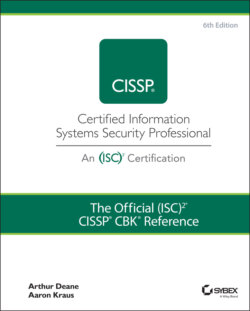Читать книгу The Official (ISC)2 CISSP CBK Reference - Leslie Fife, Aaron Kraus - Страница 127
Quantitative Risk Calculation
ОглавлениеRisk analysis can be either qualitative or quantitative (or a combination of the two). Qualitative risk analysis avoids the use of numbers and tends to be more subjective. Quantitative risk analysis is far more precise and objective, because it uses verifiable data to analyze the impact and likelihood of each risk. Quantitative risk calculation involves making measurements to mathematically determine probability (likelihood) and impact. Qualitative risk analysis involves assigning less precise values (like critical, high, medium, and low) to likelihood and impact.
While some risks can be hard to quantify, keep in mind that qualitative analysis can often be vague, imprecise, and even misleading. For example, pandemics were a pretty “low” probability of occurrence prior to 2019, but COVID-19 demonstrated that the overall risk associated with pandemics could be very high.
One important concept in quantitative risk analysis is annualized loss expectancy (ALE), which is a metric that helps quantify the impact of a realized threat on your organization's assets. ALE is measured in dollars and is the product of single loss expectancy (SLE) and annual rate of occurrence (ARO), which are each discussed here:
SLE is a measure of the monetary loss (calculated in dollars) you would expect from a single adverse event. In other words, SLE estimates how much you would lose from one occurrence of a particular realized threat. SLE is calculated by multiplying an asset's value (AV) by its exposure factor (EF). EF is the estimated percentage of loss to a specific asset if a specific threat is realized.
ARO is the estimated annual frequency of occurrence for a given adverse event. In other words, ARO is the number of times that you expect a particular risk event to occur every year.
Here are the two formulas to keep in mind:
